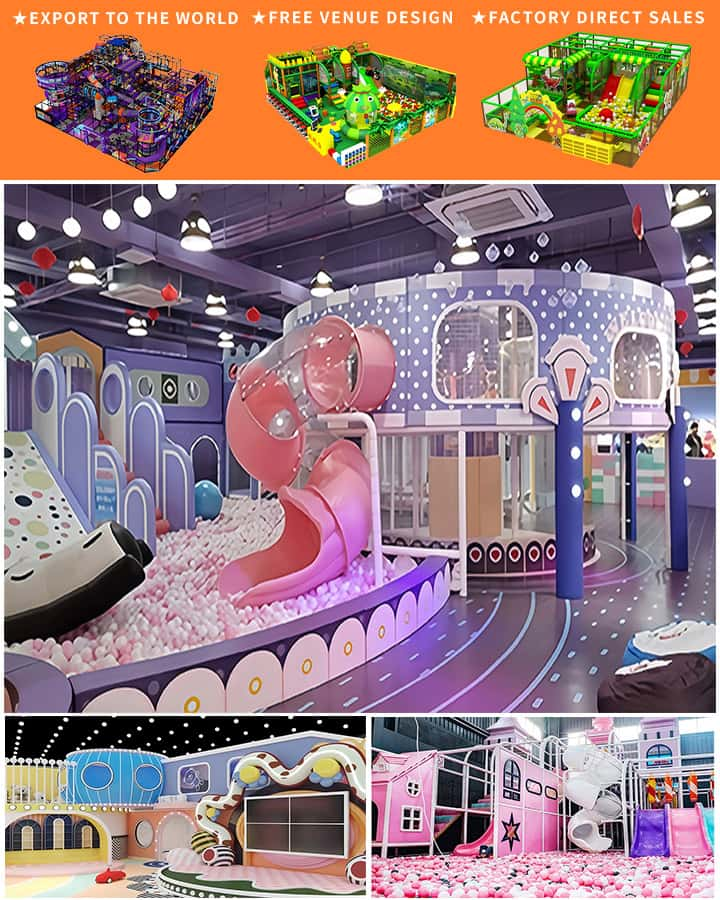When it comes to creating a safe and enjoyable environment for children to play in, indoor playground equipment stands out as an excellent option. Unlike outdoor play areas that are subject to weather conditions and other external factors, indoor playgrounds offer a controlled setting where kids can explore, learn, and develop essential motor skills year-round. Here’s a comprehensive guide to help you choose the best indoor playground equipment for your children.
Benefits of Indoor Playground Equipment
- Weather Independent: One of the most significant advantages is that indoor playgrounds are not affected by weather changes. Rain or shine, kids can enjoy their playtime without any disruptions.
- Safety: Indoor environments allow for closer supervision and more controlled safety measures compared to outdoor settings.
- Variety of Activities: From slides and climbing walls to ball pits and obstacle courses, indoor playgrounds offer a diverse range of activities that cater to different interests and skill levels.
- Developmental Benefits: Engaging in physical play helps children improve their balance, coordination, and strength, while also promoting social interaction and cognitive development.
Types of Indoor Playground Equipment
Slides: A classic element of any playground, slides come in various designs, such as straight slides, spiral slides, and even themed slides. They provide both fun and a gentle way for kids to develop their sense of direction and spatial awareness.
Climbing Walls: These structures help children develop strength and problem-solving skills. Climbing walls can be designed with different difficulty levels, making them suitable for various age groups.

Trampolines: Trampolines offer an exhilarating experience that helps improve balance and coordination. Safety nets ensure that children can jump with confidence and security.
Ball Pools: Filled with soft, colorful balls, ball pits are perfect for fostering sensory exploration and fine motor skills. They also add a vibrant visual element to the playground.
Obstacle Courses: Designed to challenge both the mind and body, obstacle courses encourage strategic thinking and physical dexterity. They often incorporate elements like tunnels, ropes, and balance beams.
Interactive Games: Digital and interactive games can add an educational component to physical play. These games often include puzzles, quizzes, and physical challenges that engage children in learning while they play.
Factors to Consider When Choosing Playground Equipment
Age Appropriateness: Ensure the equipment is suitable for the child’s age group to avoid injuries and maximize enjoyment. Manufacturers often provide guidelines regarding appropriate age ranges for their products.
Safety Standards: Look for equipment that meets national safety standards such as ASTM (American Society for Testing and Materials). Safety features like non-toxic materials, rounded edges, and secure fastenings are essential.
Space Requirements: Assess the available space in your home or facility to determine the size of the equipment you can accommodate without overcrowding or creating hazardous conditions.
Durability: Choose high-quality, durable materials that can withstand extensive use and last longer. This might mean investing a bit more upfront but will save money in the long run.
Ease of Assembly: Consider how easy or difficult it is to assemble the equipment, especially if you plan to set it up yourself. Clear instructions and all necessary tools should be included with your purchase.
Maintenance Tips
To keep indoor playground equipment in top condition, regular maintenance is crucial:
- Routine Inspections: Periodically check for loose screws, worn-out parts, and general wear and tear. Tighten any loose fittings and replace damaged components promptly.
- Cleanliness: Clean the equipment regularly with appropriate cleaning agents to remove dirt, dust, and any potential allergens. Soft surfaces should be vacuumed frequently.
- Storage: If possible, store smaller items properly when not in use to prolong their lifespan and maintain an organized play area.
Conclusion
Selecting the right indoor playground equipment for kids involves considering various factors including safety, age appropriateness, and space requirements. By focusing on these aspects and maintaining the equipment properly, you can create a fun, safe, and stimulating environment that supports children’s physical and cognitive development. Whether you’re setting up a dedicated playroom at home or a larger indoor playground facility, thoughtful planning and quality choices will ensure countless hours of joyful playtime for kids




